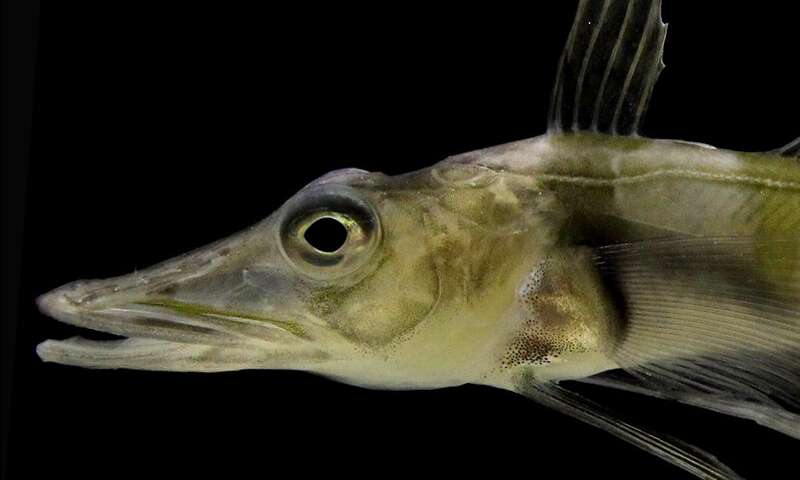The aptly named icefish are the only vertebrates that lack hemoglobin — the protein inside red blood cells that carries oxygen around. They’re also able to swim around in freezing waters and maintain liquid blood in below-freezing temperatures.

Icefish make up 90% of the fauna living in the Antarctic shelf. They’re ethereal, spooky creatures which have puzzled researchers for decades. Not only do they not have hemoglobin, but their blood and much of their body are translucent — they also have about 10% the oxygen-carrying capacity of their closest relatives. To compensate for that, they developed a large heart, an enhanced vascular system, and the ability to produce antifreeze proteins, which enable them to swim around the frigid Antarctic waters without freezing. Now, researchers from the Korea Polar Research carried out a genetic study to see how these extreme adaptations came to be.
Researchers took DNA samples from a blackfin icefish (Chaenocephalus aceratus), mapping 30,773 protein-coding genes and seeing where they are localized along the chromosome. The resulting map can be compared with existing genomes of the icefishes’ relatives, and the differences can point to genes that have adapted or disappeared as they acclimated to their environment. Looking at its genetic heritage, researchers concluded that they diverged from the lineage that produced the stickleback some 77 million years ago — much earlier than initially believed. Previously, two competing theories claimed that they were 6 or 15-20 million years ago. As the Antarctic waters got colder and colder, the adaptations started kicking in. Most fish in the Antarctic went extinct when these changes started taking place, but the icefish were able to survive through some remarkable adaptations.
“Icefishes evolved mechanisms that appear to compensate for loss of these oxygen-binding proteins, including enormous hearts with increased stroke volume relative to body size, enhanced vascular systems, and changes in mitochondrial density and morphology,” researchers write in the paper.
“As Antarctica cooled, finally reaching −1.9 °C in the high Antarctic about 10–14 million years ago, ecological niches opened into which the [icefishes] radiated due to adaptive changes for cold tolerance, including antifreeze glycoproteins in larvae and adults and ice-resistant egg chorion proteins surrounding embryos. [Icefishes] living in constant cold, evolved a substantially non-conventional heat-shock response,” they continued.
Icefish evolved from bottom-feeding fish without a swimming bladder. In most fish species, the swimming bladder allows them to fill up with air and stay buoyant, as their bones are heavier than water. They were able to compensate this by reducing mineralization and by picking up on lipids which are lighter than water, says John Postlethwait, from the University of Oregon, first author of the study — think of how oil floats on water.
Aside from the DNA samples, RNA was extracted from 12 tissues (brain, eye, gill, heart, intestine, kidney, liver, muscle, ovary, skin, spleen and stomach) to help understand what genes each organ uses.
In addition to figuring out how this unique creature came to be, the study also reveals a lot of information about evolution itself. These incredible adaptations, and particularly the ability to produce antifreeze proteins, which makes them promising for human health studies.
“We will now be able to mine this genome to learn how the fish evolved these seemingly pathogenic traits to their benefit,” said Postlethwait. “Understanding how these traits arose over evolutionary time in icefish may help us to appreciate how similar traits—bone loss, decrease in the ability to make blood cells, problems of the circulatory system, obesity—arise in aging humans over developmental time.”
The study was published in Nature.



